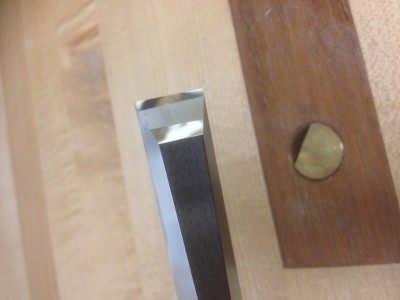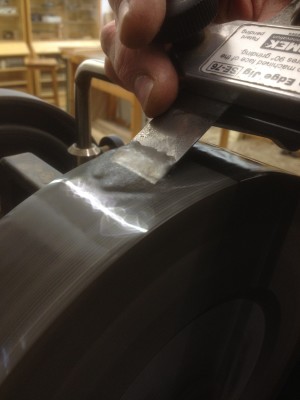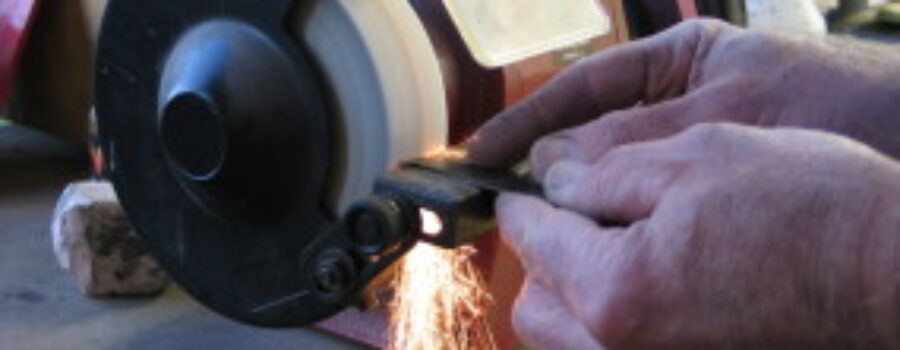It’s the subject that everyone in the world of woodwork seems to be constantly banging on about. How many jigs and gismos are there on the market apparently intended to ‘simplify’ this seemingly rather tricky and elusive skill? And can you trust the extravagant claims on the packaging of these cunning devices? What is the correct angle for a primary bevel, is there any need for a secondary bevel, what’s the difference between a grind angle and an ‘included’ angle, what’s the best bench stone system………….?

Sharpening doesn’t have to be a complicated process, but remember, if you aren’t prepared to master it, you’d really ought to go and find yourself a different hobby or career. Without sharp tools, you probably won’t be having much fun and you’re unlikely to be having very much success. Either way, you’re really just wasting your time.
So, on the basis that I would really like your woodworking endeavours to be successful, and that the incessant clicking of knitting needles might drive you towards insanity, how can I help you get past this hindrance and on the path towards woodworking contentment?
The fact is that you’re going to have to invest some money and buy some kit – then you just have to put in some time!

First, let’s get the kit right. Buy a grinder. In my world, a hollow grind is the key to woodworking happiness, especially if you’re having to deal with hard, exotic steel. Your best bet is a slow turning, water-cooled, grinding wheel, you know the ones, some of them are blue and come from Sweden. Much more controllable than the rather more exciting, fast turning bench grinder with all its noise and sparks, but either can work and both require a jig of some sort to control the grind angle.
You’re going to need three bench stones if you want this to be a quick, painless process. One really fast-cutting and aggressive (400grit or equivalent), one medium (somewhere in the 1000 to 4000 range) and one polishing stone (6000 -8000 ish), to get that razor-sharp sparkle. I’ve been a fan of water-stones for years and I think, on balance, they’re still hard to beat, Shapton are my current favourites, but there’s loads of other systems out there, just make sure that whatever you choose is flat, or can be flattened!
I have been known to be a bit evangelical about freehand sharpening, it can be quick, but it can also be frustrating, so if this is just a hobby for you, you’re partial to a bit of instant gratification, and you’re happy for freehand sharpening to be an aspiration for the moment, get yourself a simple honing guide. The Eclipse is no longer made but there are cheap copies available, or if you like a bit of beautifully engineered stainless steel and bronze, have a look at the Lie-Nielsen version. Or maybe try the Veritas Mk II with its wide roller, angle setting jig and ‘micro bevel’ facility.
So, your first step towards successful sharpening is to buy some kit, but when you’re leafing through the ‘tool porn’ remember that ‘cheap’ can be ‘nasty’! When you’ve got your hands on some kit we’ll have a look at those bewildering angles……


